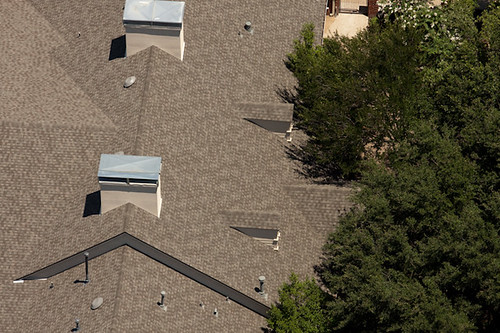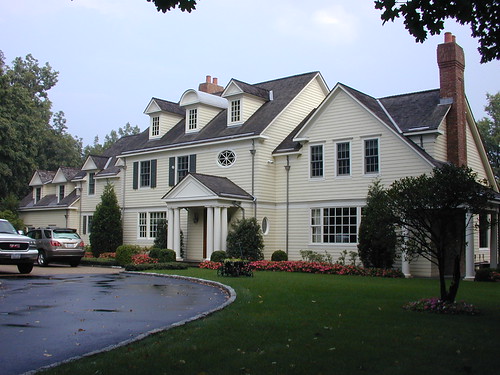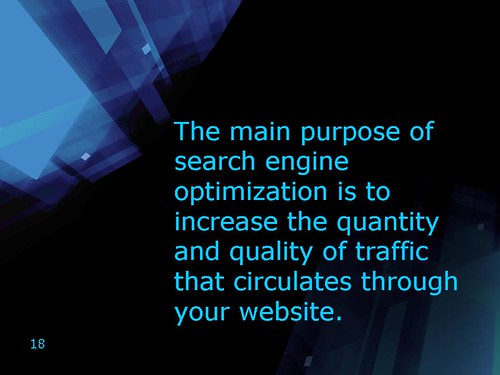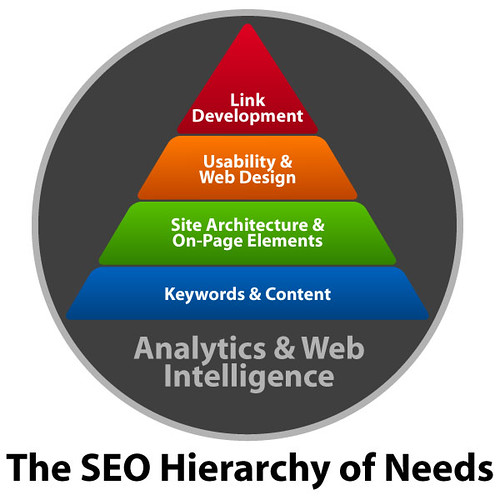Fewer than 1 percent of website visits come directly from a social media URL according to research just released by customer satisfaction analytics experts ForeSee Results.
The company surveyed 300,000 consumers on more than 180 websites across a dozen private and public sector industries. The referring social media sites covered were not just the usual suspects like Facebook and Twitter, but over 40 sites including Flickr, Foursquare, Scribd, Stumbleupon, Meetup and Youtube.
It’s not all bad news for social media marketeers. 18 percent of site visitors (averaged across surveyed websites) report being influenced by social media to visit a website. However, there was considerable variation in the results for different companies.
The social media budgets of marketers is constantly increasing as the survey data to the right shows. Forsee Results’ research showed that the resources companies put into social media and the results they receive vary wildly. Spending more money does not automatically lead to higher numbers of visits to websites, brand awareness or sales.
Promotional emails are also sometimes neglected in favor of the more glamorous social media, in spite of the fact that such emails influence 32 percent of purchases.
Companies themselves seem a bit confused about their objectives when it comes to social media. Internet Retailer Magazine surveyed 400 U.S. companies (19 percent of them retailers) in December 2009 and January 2010. It found that 74 percent of companies wanted social media to drive traffic to their websites, while only 56 percent wanted it to increase sales. Shouldn’t it be the other way around?
Next Story: Why mobile app success is more than just download numbers Previous Story: Battle brewing at Microsoft over retail store expansion
bench craft company
 A former associate director in charge of the University of Kansas ticket office and "gatekeeper" for stolen tickets was sentenced Thursday to 57 months in prison for her role in the $2 million conspiracy.
A former associate director in charge of the University of Kansas ticket office and "gatekeeper" for stolen tickets was sentenced Thursday to 57 months in prison for her role in the $2 million conspiracy.
bench craft companyUPDATE: As of 4:30 p.m. EST, Fox has apparently pulled the article in question from their site.
bench craft companyAs Rupert Murdoch stepped into the Grand Ballroom of San Francisco's Palace Hotel at the Web 2.0 conference in October 2007, the developers and engineers who packed the room fell into a respectful hush.
bench craft companyApple has reportedly become more aggressive in securing components from overseas suppliers, making moves such as upfront cash payments to both ensure supply and block out competitors.
Analyst Brian White with Ticonderoga Securities said in a note to investors on Thursday that Apple began "aggressively attacking" the component situation in Japan following the earthquake and tsunami that struck the country. The iPhone maker reportedly sent executives to suppliers immediately to ensure adequate supply of components, and also began offering upfront cash payments.
Separately, White's contacts in Taiwan also revealed that Apple is allegedly securing component capacity using what is known as a "three cover guarantee," referring to capacity, stock and price. Apple's move is seen as one that could potentially block out competitors and prevent them from building ample supply of devices.
The information comes as a separate report out of the Far East suggested that a one-month delay for Research in Motion's PlayBook tablet was as a result of Apple securing most of the available touch panel production capacity. The delay has forced the PlayBook to go on sale after Apple's in-demand iPad 2.
Last month, it was said that Apple could agree to price hikes in order to secure touch panel supply, particularly in the aftermath of the Japan earthquake. Apple was said to be in talks with component makers about touch panel pricing, and allegedly considered some price increases in negotiations.
In the company's last quarterly earnings call, Apple Chief Operating Officer Tim Cook revealed that Apple had invested $3.9 billion of its nearly $60 billion in cash reserves in long-term supply contracts. He declined to reveal what components Apple had put its money toward, citing competitive concerns, but said that it was a strategic move that would position the company well in the future.
Analysts largely believe that the secret investment was related to touch panel displays that are the centerpiece of devices like the iPhone and iPad. One cost breakdown estimated that such an investment could secure Apple 136 million iPhone displays, or 60 million iPad touch panels.
It's a move similar to 2005, when Apple inked a major deal with Samsung to secure longterm supply of flash memory. NAND flash would go on to become a major part of Apple's products, including the iPhone, iPad and new MacBook Air.
Apple co-founder Steve Wozniak said in an interview this week that he would consider returning to an active role at the company he helped start if asked.
During an interview in England this week, Wozniak said, "I'd consider it, yeah," when asked whether he would play a more active role if asked,
Reuters reports.
Wozniak, Steve Jobs and Ronald Wayne founded Apple Computer in 1976. Wozniak left his full-time role with the company in 1987, but remains an employee and shareholder of Apple.
Since leaving Apple, Wozniak has been involved in a wide range of entrepreneurial and philanthropic endeavors. He currently serves as Chief Scientist for storage company Fusion-io.
Meanwhile, Jobs is currently taking an indefinite leave of absence to focus on his health, though he remains CEO of Apple and continues to be involved in strategic decisions.
Wozniak, who has widely been acknowledged as the technical genius behind Apple's early success, believes that he has a lot to offer the company he helped start, which went on to become the world's second-largest company in terms of market value.
"There's just an awful lot I know about Apple products and competing products that has some relevance, some meaning. They're my own feelings, though," Wozniak said during the interview.
When asked his opinion on Apple today, Wozniak praised the company for its track record with recent products. "Unbelievable," he said, "The products, one after another, quality and hits."
Even so, Wozniak admitted that he'd prefer Apple's devices to be more open, so he can "get in there and add [his] own touches." Last December, Wozniak revealed that he had purchased a DIY kit for the iPhone 4 and "modded" the device into the as-yet-unreleased white version.
"My thinking is that Apple could be more open and not lose sales," said Wozniak, while adding, "I'm sure they're making the right decisions for the right reasons for Apple."
Wozniak has been committed to openness since the beginning. In December, Wozniak told reporters that he didn't design the original Apple I to make a lot of money and had given the designs away for free after his former employer HP showed no interest in the computer.
bench craft companybench craft companyclass="dropcap">Bill Thomas used to be a climate change skeptic, not believing that humans could have influenced the dramatic atmospheric shift, but two weeks in the woods — and chats with scientists — changed his mind.
“I remember vividly that first day with Dr. Jess Parker; he showed us a chart of CO2 levels increasing about the time of the industrial revolution,” says Thomas, who works for HSBC bank and participated in a 2007 Climate Champions training program. There, a personal epiphany led to a job title change — the former relationship manager for HSBC Technical Services is now group head of HSBC Technology and Services Sustainability.
Teaching employees the science behind green corporate values and how to make their workplaces sustainable isn’t just for “green” show — done right, it’s good business strategy.
“There seems to be a huge growth of interest among companies to not just keep the environmental initiatives within a subset of employees, but to make it a pervasive part of the corporate culture,” says Krista Badiane, who manages the business and environment program at the National Environmental Education Foundation. And unlike broad, mandated rules — such as carbon caps — companies that create their own initiatives take ownership and credit for sustainable changes, which may well go beyond what laws would have dictated.
By cultivating current workers’ energy-saving ideas and environmental passions, companies can save resources, energy and money as well as boost their eco-friendly reputation. The key is to help employees learn why sustainability matters — for instance, unless it’s slowed, climate change could alter global landscapes and increase natural disasters in our lifetimes. And if employees realize what’s at stake, they’ll find ways to save resources at work — as well as at home.
Worker to Citizen Scientist/> In a patch of woods in Edgewater, Md., bordering Smithsonian Environmental Research Center campus buildings, HSBC technology managers are intently straightening a measuring tape wrapped around a mature oak. Phil Clarke, from Portland, Ore., leans in and meticulously gets a reading of its diameter: 94.8 inches. During this weeklong Sustainability Leader training, he’s learning what scientists do and what shape the planet is in. He knows that the measurements taken today — even though what they reveal won’t be known for awhile — will help guide decisions that will keep our world sound for future generations.
His employer, HSBC bank — a global financial services company with 300,000 employees working in 8,000 offices and pre-tax profits topping $11 billion — decided to go carbon neutral in 2005. For the past three years, HSBC bank has partnered with EarthWatch Institute for an international study on climate change’s effects on tree growth, as well as a program that trains employees around the world in sustainability. When workers return to the office after their forest immersion, they find ways to integrate newly learned sustainability lessons in their spheres of influence.
Clarke and the other HSBC technology services managers from around North America — key decision-makers hand picked for the training — earn the title of Sustainability Leader. A larger two-week program trains HSBC employees from all levels — from cashier to marketing staffer — to become Climate Champions.
Such citizen science training helps corporate employees understand the mechanics of science — that systems are complex, and that there are no easy answers. “You learn what a critical state the world is actually in,” says Annette Fasolino of HSBC’s payment operations division in Buffalo, N.Y.
Having that up-close experience with scientists and ecosystems helps employees better grasp how climate change is impacting, and may impact, the world. “Many of these people go back and question their decisions, and make sure they’re making the most sustainable decisions,” says Thomas.
Cultivating the Grassroots/> Though the partnership between HSBC and EarthWatch is unique, other companies are also looking to their staff for sustainable solutions. “There’s no one best program for a company to educate their employees,” Badiane says.
Some companies or groups of motivated employees organize green teams, which promote eco-friendly changes and teach colleagues sustainable alternatives. Initiatives range from banning disposable utensils in the lunchroom to redesigning an operating system to save raw materials. “Ideally, you’re getting some new ideas out of your employees,” says Deborah Fleischer, president of Green Impact, a sustainability consulting service.
Businesses also use social media sites such as Yammer — a private social network for companies — or online training to generate sustainable ideas.
Other companies dangle a carrot — awards and incentives — to get workers to make sustainable choices. Yogurt maker Stonyfield tied facility energy savings (based on energy use per ton of product) to employee bonuses. In this way, the company reduced energy use by more than 22 percent, according to a NEEF report.
To engage workers of all levels, eBay employed competition: a Big Green Idea Contest. To enter, employees identified ways the company could meet greenhouse gas reduction goals; then, employees voted on the top ideas. One idea, the eBay Box — simple, eco-friendly packaging that’s meant to be reused for eBay shipments — has become a useful tool that saves money and resources.
Unfortunately, some companies’ efforts are no more than greenwashing stunts to appear eco-friendly and keep up with their competition. Producing disposable trinkets with “green” logos or launching environmental-focused public relations initiatives while pushing pollution limits does not jive with true sustainability. The companies mentioned here, however, offer genuine solutions that leave a lighter footprint.
Two Kinds of Green/> Such engagement can yield significant savings: One North American HSBC Climate Champion noticed that co-workers weren’t shutting down their PCs every night, wasting energy. Now, NightWatchman software automatically shuts down more than 6 million computers left on. During fiscal year 2010 in North America, the software coupled with an awareness program saved 4 million kilowatts per year of electricity and about 900 metric tons of carbon dioxide, which shaved $332,000 on energy bills.
At defense contractor Lockheed Martin, a Camden, Ark., building uses a software system to control lighting and air conditioning, leading to more than $200,000 in reduced costs and savings of 2,332 metric tons of carbon dioxide annually, according to the NEEF report. And at drugmaker Genetech, green teams slashed the use of bottled water, saving the company $200,000 a year by using filtered water machines paired with reusable bottles, according to a white paper by Fleischer, “Green Teams: Engaging Employees in Sustainability.”
But benefits to a company can’t always be calculated in dollars.
“By creating an engaged employee base, we’re really putting it into hearts and minds of employees, and that’s going to be much more powerful and long-term than saying ‘you must turn off your PC,’” says Sharon Walck, senior vice president of sustainability at HSBC North America.
Investing in and teaching sustainable values to workers also boosts retention, according to NEEF, which is extremely important to large corporations. The foundation says losing and replacing a good employee can cost a company between 70 percent and 200 percent of that employee’s annual salary.
And, Badiane says, “employees who are motivated want to work for a company that has the same values.”
Sign up for the free Miller-McCune.com e-newsletter.
“Like” Miller-McCune on Facebook.
Follow Miller-McCune on Twitter.
Add Miller-McCune.com news to your site.
Next, Odeo moved into an office and started hiring more employees – including a quiet, on-again, off-again Web designer named Jack Dorsey and an engineer named Blaine Cook. Evan Williams became Odeo's CEO.
By July 2005, Odeo had a product: a platform for podcasting.
But then, in the fall of 2005, "the shit hit the fan," says George Zachary, the Charles River Ventures partner who led the firm's investment in Odeo.
That was when Apple first announced iTunes – which included a podcasting platform built into every one of the 200 million iPods Apple would eventually sell. Around the same time, Odeo employees, from Glass and Williams on down, began to realize that they weren't listening to podcasts as much as they thought they would be.
Says Cook: "We built [Odeo], we tested it a lot, but we never used it."
Suddenly, says Zachary, "the company was going sideways."
By this point, Odeo had 14 people working full time – including now-CEO Evan Williams and a friend of his from Google, Christopher "Biz" Stone.
Williams decided Odeo's future was not in podcasting, and later that year, he told the company's employees to start coming up with ideas for a new direction Odeo could go. The company started holding official "hackathons" where employees would spend a whole day working on projects. They broke off into groups.
Odeo cofounder Noah Glass gravitated toward Jack Dorsey, whom Glass says was "one of the stars of the company." Jack had an idea for a completely different product that revolved around "status"--what people were doing at a given time.
"I got the impression he was unhappy with what he was working on – a lot of cleanup work on Odeo."
"He started talking to me about this idea of status and how he was really interested in status," Glass says. "I was trying to figure out what it was he found compelling about it."
"There was a moment when I was sitting with Jack and I said, 'Oh, I do see how this could really come together to make something really compelling.' We were sitting on Mission St. in the car in the rain. We were going out and I was dropping him off and having this conversation. It all fit together for me."
One day in February 2006, Glass, Dorsey, and a German contract developer Florian Weber presented Jack's idea to the rest of the company. It was a system where you could send a text to one number and it would be broadcasted out to all of your friends: Twttr.
Noah Glass says it was he who came up with the name "Twttr." "I spent a bunch of time thinking about it," he says. Eventually, the name would become Twitter.
After that February presentation to the company, Evan Williams was skeptical of Twitter's potential, but he put Glass in charge of the project. From time to time, Biz Stone helped out Glass's Twitter team.
And it really was Glass's team, by the way. Not Jack Dorsey's.
Everyone agrees that original inkling for Twitter sprang from Jack Dorsey's mind. Dorsey even has drawings of something that looks like Twitter that he made years before he joined Odeo. And Jack was obviously central to the Twitter team.
But all of the early employees and Odeo investors we talked to also agree that no one at Odeo was more passionate about Twitter in the early days than Odeo's cofounder, Noah Glass.
"It was predominantly Noah who pushed for the project to be started," says Blaine Cook, who describes Glass as Twitter's "spiritual leader."
"He definitely had a vision for what it was," says Ray McClure.
"There were two people who were really excited [about Twitter,]" concurs Odeo investor George Zachary. "Jack and Noah Glass. Noah was fanatically excited about Twitter. Fanatically! Evan and Biz weren't at that level. Not remotely."
Zachary says Glass told him, "You know what's awesome about this thing? It makes you feel like you're right with that person. It's a whole emotional impact. You feel like you're connected with that person."
At one point the entire early Twitter service was running on Glass's laptop. "An IBM Thinkpad," Glass says, "Using a Verizon wireless card."
"It was right there on my desk. I could just pick it up and take it anywhere in the world. That was a really fun time."
Glass insists that he is not Twitter's sole founder or anything like it. But he feels betrayed that his role has basically been expunged from Twitter history. He says Florian Weber doesn't get enough credit, either.
"Some people have gotten credit, some people haven't. The reality is it was a group effort. I didn't create Twitter on my own. It came out of conversations."
"I do know that without me, Twitter wouldn't exist. In a huge way."
By March of 2006, Odeo had a working Twitter prototype. In July, TechCrunch covered Twttr for the first time. That same summer, Odeo employees obsessed with Twitter were racking up monthly SMS bills totalling hundreds of dollars. The company agreed to pay those bills for the employees. In August, a small earthquake shook San Francisco and word quickly spread through Twitter – an early 'ah-ha!' moment for users and company-watchers alike. By that fall, Twitter had thousands of users.
By this point, engineer Blaine Cook says it began to feel like there were "two companies" at Odeo – the one "Noah and Florian and Jack and Biz were working on" (Twitter) and Odeo. Twitter, says Ray McClure, "was definitely the thing you wanted to be working on."
bench craft companyGreat news: Working population percentage drops to three-decade low.
bench craft companyiLounge news discussing the Apple releases iOS 4.3.2 for iPhone, iPad, iPod touch. Find more Apple news from leading independent iPod, iPhone, and iPad site.










